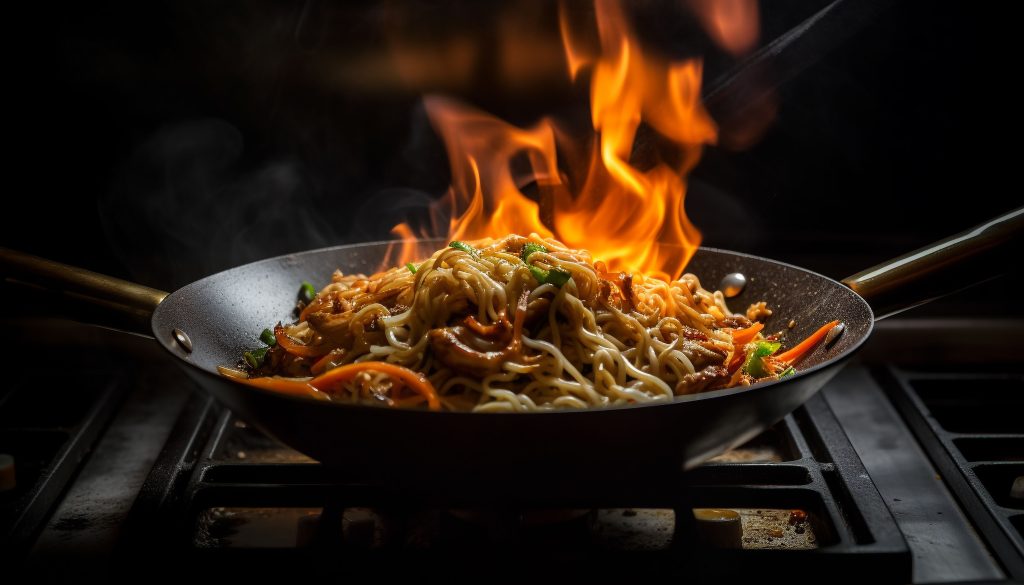
There’s something oddly satisfying about stir-frying — fast, loud, messy, and a little smoky if you’re doing it right. But here’s what I’ve learned after burning more meals than I care to count: without the proper tools, your wok might as well be a salad bowl.
In your kitchen, surrounded by gadgets and fryers that promise shortcuts, the wok stands apart. Cooking with a wok isn’t just “fun” or “healthy” — it’s elemental. Fire and steel. Motion and heat. But don’t overcomplicate it. You don’t need a drawer full of shiny toys. You need the essentials. The real ones.
Let’s talk about them.
What’s So Special About a Wok Anyway?
People love to pretend their regular frying pan can stir fry. It can’t. Not really. The shape of a stir fry wok isn’t just for flair — it’s functional.
With that sloped design, you’re not just cooking on the bottom — you’re cooking all the way up the sides. Food slides in and out of the heat instead of stewing in its own steam. That’s where the flavor lives.
Why it works so well:
- The heat focuses at the bottom and softens up the sides
- Ingredients move like dancers — fast in, fast out
- You use less oil, but somehow, it tastes better
Once you feel how ingredients respond in a wok cooking pan, you’ll never go back to a skillet again.
Carbon Steel or Cast Iron?
People always throw this one at me. Honestly, it’s not even close.
Carbon steel woks are what you want — trust me on this. They heat up fast, cool down fast, and after a few sessions, they build a surface slicker than most non-sticks.
Cast iron? That’s for southern fried chicken and cornbread. Don’t get me wrong, I love cast iron — it’s old-school and dependable. But in a wok setting, it’s bulky, slow, and just doesn’t respond fast enough for the rapid-fire action stir-frying demands.
Here’s what makes carbon steel the clear winner:
- Light enough to flip with one wrist
- Builds seasoning with use — gets better over time
- Handles high heat without a complaint
If you’re using a flat stove, get a flat-bottom wok. That one detail changes everything.
You Only Need a Few Tools
The internet will try to sell you twenty things. Don’t fall for it. I’ve tried half of them. Most collect dust.
What you do need:
- Wok spatula — curved edge hugs the wok, won’t scratch, moves food like a dream
- Ladle — essential for sauces, or just scooping broth with grace
- Bamboo cleaning brush — yes, you need this; metal scrubbers are a crime
Maybe a wok ring if your stovetop isn’t ideal. That’s it. That’s the whole setup. You can do serious things with just those.
Can You Use a Wok on Any Stove?
You can, sure — but whether you should depends on your stove.
Gas burners are the sweet spot. They let the flames lick up the sides, which is where that charred, almost smoky flavor comes from. That’s what the Cantonese call wok hei. You can’t fake that. And if you’re on an induction or electric top? You’re not doomed — but things get trickier.
Flat-bottom carbon steel will help. But skip the non-stick — it can’t take the heat, and stir-frying without serious heat is like making pizza in a toaster.
If You’re Gonna Do It, Do It Properly
Half-committing to wok cooking is like jogging in flip-flops. You’ll get nowhere fast.
Crank the heat. Let it smoke. Throw in aromatics and listen to the sizzle like music. If your wok’s not screaming when you drop in ginger and garlic, it’s not hot enough.
And once you get a feel for it, you’ll want to wok everything. It’s addictive — that fast, flick-of-the-wrist kind of cooking. There’s a rhythm to it, and when you find it, it feels less like cooking and more like dancing with fire.